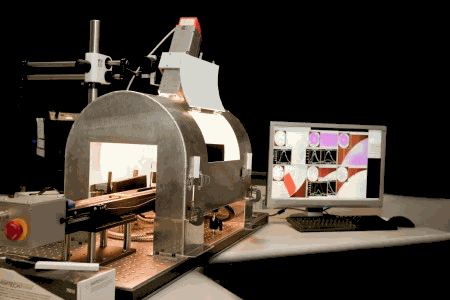by Mieke Van Bavel, science editor, imec
May 25, 2011 – A delicious piece of salmon, nicely decorated with mashed potatoes and red cabbage. Not a foretaste of what we’ll get at the itf2011 conference dinner, but a picture out of Francesco Pessolano’s presentation to illustrate what future vision systems will be capable of.
In the world of cameras, video, and spectral tools, the future is to digital optics — take the optical path (i.e., lenses, mirrors, filters) and make it out of chips, in a digital way. Let’s get back to our piece of salmon. We can look at it with a traditional imaging system and it tells us which color, shape, and texture the salmon has, just as our own eyes do. But we can also use hyperspectral imaging. This technique zooms in on each pixel and looks at the light reflected from the pixel, from UV to IR and even deep-IR. It gives us a curve, which is characteristic for the material at that specific salmon pixel. It allows us to "see more." Hyperspectral imagers are in use by industry, but they are very slow, massive and expensive. This hinders their wide applicability in areas such as healthcare, forensic medicine and food sorting.
If we implement digital optics, however, we get a small, fast, cheap, reliable, and broadly employable hyperspectral imaging system — that’s the aim of imec’s NVision program, headed by Pessolano. The digital optics inside will be enabled by advanced CMOS, by microscale MEMS (think about micromirror arrays to make digital lenses), and on the longer-term by nanoscale MEMS. Digital optics will offer the advantages of digital imaging. And compared to traditional optics, it costs less, is easy to scale, improves what exists (such as hyperspectral imaging) and opens up a range of revolutionary applications (such as holographic video). Developing the new vision systems requires a holistic approach: we should look at the system from technology all the way to application, from exploring digital optics all the way to examining the quality of our piece of salmon.
 |
| Setup for hyperspectral imaging. The goal of this research is to develop building blocks for a fast, low-cost, easy-to-use and small hyperspectral camera. This can for example be used in food sorting applications. |

